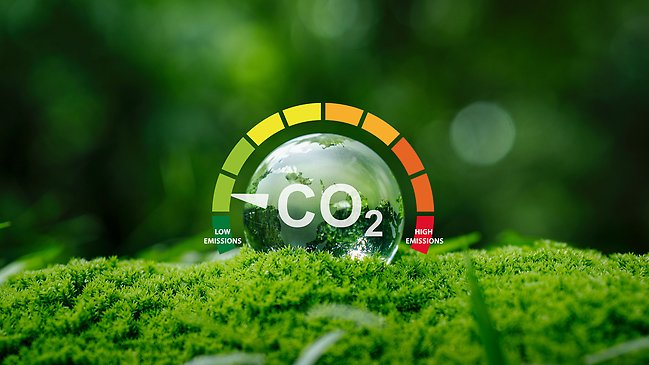Climate change management
Our climate change policy contains guidelines on climate change mitigation and adaptation The policy was developed taking into account our understanding of our stakeholders’ needs and interests.
Our guidelines on climate change mitigation state that we should continuously reduce emissions in our own operations, carry out energy efficiency measures, increase our self-generated renewable energy and increase the proportion of purchased renewable energy.
In our work relating to climate change adaptation, we have guidelines on the use of risk assessments, on the introduction of adaptations where required and on collaboration with external partners. The policy also describes that we should provide transparency on our work relating to our goals, outcomes and activities aimed at reducing our climate impact.
Actions in our own operations
To reduce our climate impact, we are working to reduce the use of fossil fuel in our production units and replace heating systems with heat pump and ventilation solutions. This is done through systematic energy mapping that identifies small and large improvements in our properties as regards cooling, heating and ventilation systems and energy losses in manufacturing processes. The largest opportunities for reducing our climate impact are in:
Buildings: By installing our own product solutions, we can make the transition from fossil fuel to renewable energy.
Processes: Where the technology exists, we can replace processes with renewable alternatives.
Transport: We can switch from fossil fuels to electricity or hybrid solutions where appropriate and where the necessary infrastructure exists.
We are continuously investing in technical and purification equipment. To be able to achieve our climate-related targets, work is underway on converting our climate control facility from fossil fuels to renewable solutions, and we will be able to use products from our own product portfolio to do this. We also intend to increase the proportion of self-generated renewable energy and change our process heating from fossil fuel sources to biogas or electricity as soon as this becomes technically and commercially feasible.
Actions to reduce climate impact in the value chain
We are also working to reduce our indirect climate impact in the supply chain. We do this by, e.g., selecting input materials with lower climate impact and suppliers with lower energy use. Innovative product development also enables us to reduce products’ climate impact throughout their life cycle. We are taking measures to replace our refrigerants with natural substances with a lower Global Warming Potential (GWP) in both current and future product ranges. This means that the climate impact from any refrigerant leaks at customers’ sites is significantly reduced
Climate change adaptation actions
We carry out regular climate risk assessments to map risks and opportunities for our operations and suppliers. We implement adaptation solutions in our operations to mitigate identified climate risks, e.g. by installing climate control systems for heating and cooling, limiting our water consumption in areas of water scarcity and by maintaining buildings at risk of severe storms. We also collaborate with external partners such as trade associations and authorities concerning the exchange of experiences, technical development to understand risks and opportunities and to improve our resilience to climate change
Allocated resources for climate action
The Board of NIBE Industrier AB has decided on an investment frame of SEK 1 billion in the Group to enable us to achieve our target for reducing carbon dioxide emissions by 2030 in accordance with the action plan. Our assessment is that operating costs will not change significantly because the investments are expected to improve our energy efficiency. The investments will be allocated over the year up until the target year 2030.



